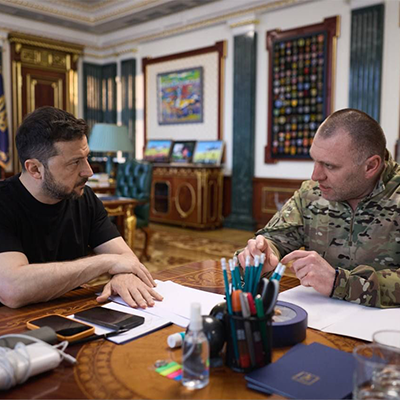Erik Lin-Greenberg | Bulletin of the Atomic Scientists
June 13, 2025

Beyond destroying military equipment, Ukraine’s precision strikes deep in Russian territory almost certainly generated psychological effects in Russia’s military leaders and public. The strikes demonstrate that areas of the homeland far from the frontlines are vulnerable, that the homeland is no longer an impregnable sanctuary.
-SSP Erik Lin- Lin-Greenberg
Earlier this month, Ukraine’s security services launched an audacious, multi-pronged drone attack on military airbases deep in Russian territory. The attacks degraded Russia’s military capability, damaging or destroying dozens of bombers, transports, and command and control aircraft, and highlighted how drones are changing the character of armed conflict.
In the early days of the Russia-Ukraine war, Ukraine relied heavily on drones for intelligence gathering, employing remotely piloted aircraft to locate and help target enemy troops. Russia has launched thousands of one-way attack drones at Ukraine, destroying both civilian and military infrastructure. Both sides have increasingly used first-person view (FPV) drones—small and highly maneuverable platforms with relatively short flight times that transmit live video feed to operators—to attack their rivals. Most first-person view drones target troops and equipment near the frontlines, but Kyiv’s June 1st airbase attacks marked a significant shift in the employment of these drones.
Rather than using first-person view drones along the battlefront, the Ukrainian Security Service launched these drones to strike critical military assets thousands of miles from Ukraine in a mission dubbed “Operation Spider’s Web.” According to Ukrainian officials, the operation involved more than 100 small Osa quadcopter Ukrainian-made drones, each with four rotating propellers and carrying roughly seven pounds of explosives. Given their relatively short range—about 15 minutes of flying time—these drones were deployed near their targets, hidden in the roof compartments of prefabricated buildings loaded onto trucks. Once the trucks arrived at designated locations near the targeted airfields, the drones were launched and guided to their targets by pilots operating far from the front lines, reportedly aided by artificial intelligence systems.
Kyiv’s creative use of relatively low-tech and low-cost quadcopters demonstrates how drones can lower the barrier to obtaining long-range precision strike capabilities that were once the domain solely of advanced military powers. Proliferation of drone technologies and tactics will increase the number of actors—both state and non-state—that can project kinetic power in ways that hold their rivals’ critical military assets at risk.
While analysts and pundits debate the exact number of aircraft destroyed, Ukraine’s attack targeted Tu-22, Tu-95, and Tu-160 strategic bombers along with A-50 airborne early warning aircraft—all platforms that Moscow has employed in its war against Ukraine. Moreover, the coordinated attacks targeted five airbases, some of which were thousands of miles from Ukrainian territory.
